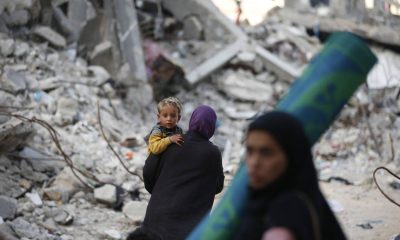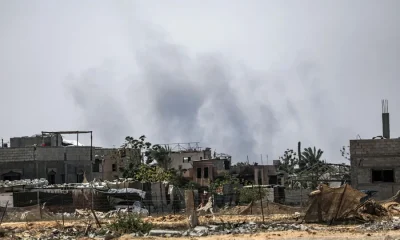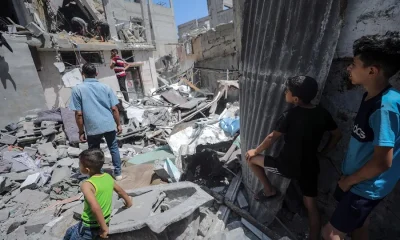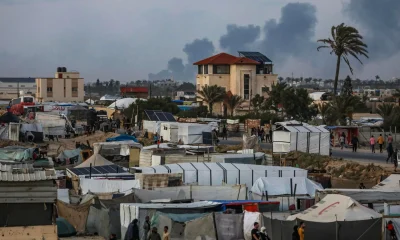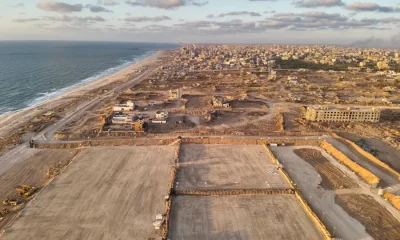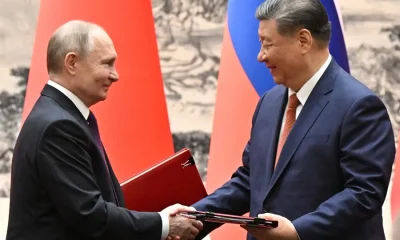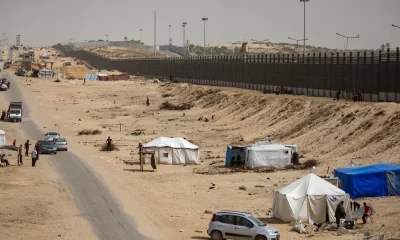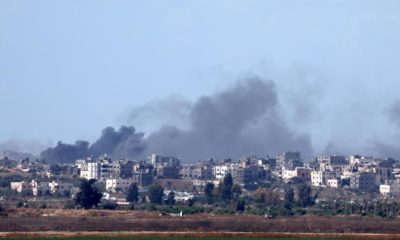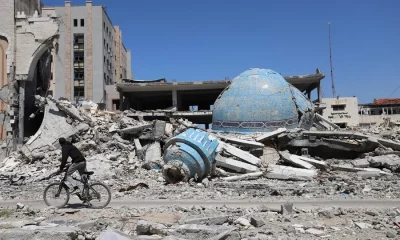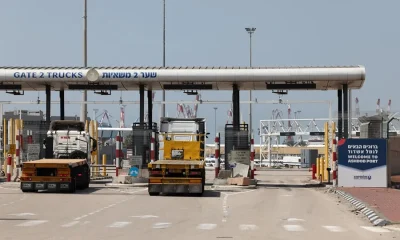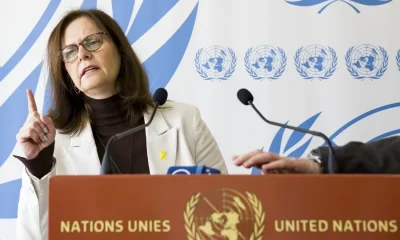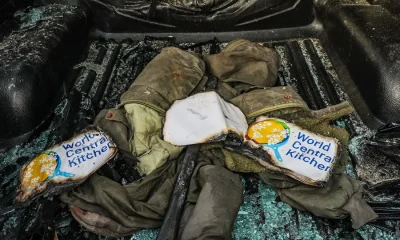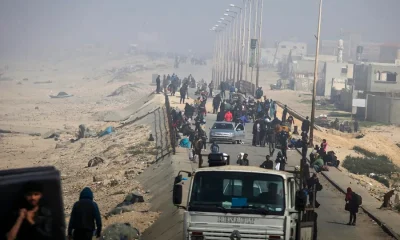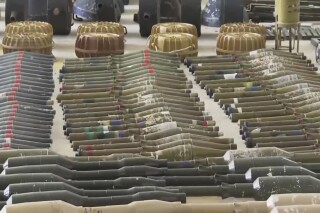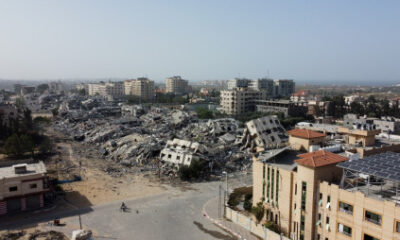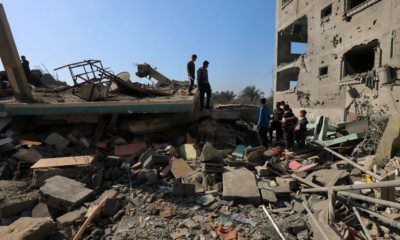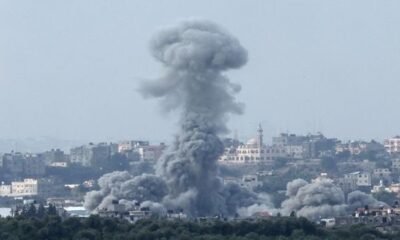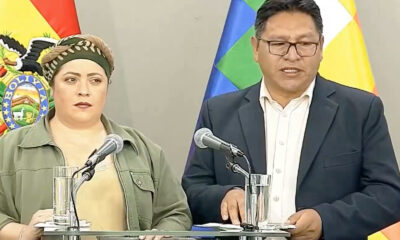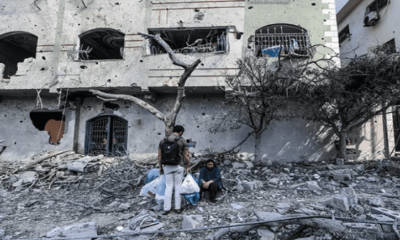International
UN denounces Israeli attacks on refugee sites in southern Gaza
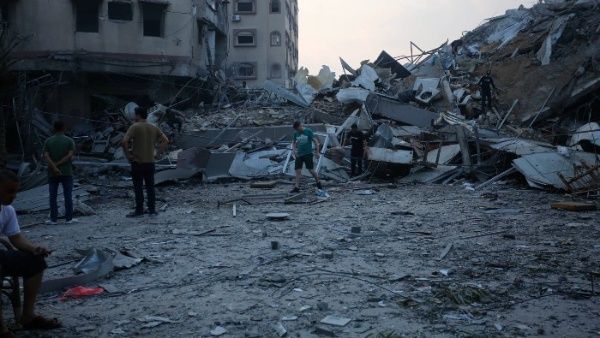
October 17 |
The United Nations (UN) confirmed Tuesday that the occupation army’s air force has continued to attack the south of the Gaza Strip, just where it had demanded that refugees fleeing Tel Aviv’s previous incursions move to.
The attacks, denounced by the United Nations Relief and Works Agency for Palestine Refugees in the Near East (UNRWA), have taken place over the town of Khan Yunis, despite having ordered civilians to move to that part of the Palestinian enclave, where more than 600,000 people have arrived in recent days.
According to UNRWA, the most serious problem at the moment is the lack of water and warned that “people will start dying without it”.
In this regard, UNRWA points out that the last seawater desalination plant operating in Gaza has stopped operating, increasing the risk of dehydration and disease as Palestinians begin to drink water unfit for human consumption.
At the same time, the director of the World Health Organization (WHO) office for the Eastern Mediterranean, Ahmed al Mandhari, assured that UN humanitarian aid has been ready in Egypt for more than 72 hours awaiting distribution to the Gaza Strip and Israeli authorization.
According to al Mandhari, “We have repeatedly called for humanitarian access to the Gaza Strip through the Rafah border crossing from Egypt.” Gaza will become a “real catastrophe,” al Mandhari warned, as its water, electricity and fuel supplies will run out in less than 24 hours.
Meanwhile, UN World Food Program representative Abeer Etefa also called for “unimpeded access and a safe corridor for urgently needed humanitarian supplies” in Gaza.
Etefa stated that “we have heard from Egypt that the security situation does not allow convoys to move.”
International humanitarian organizations continue to stockpile essential supplies for the people of the Gaza Strip in Egypt as they wait for Egyptian authorities to authorize the opening of the Rafah crossing, the only one that allows access to the Palestinian territory and which is not controlled by Israel.
The agency’s food aid shipments are at an Egyptian location near the Gaza border and are ready to be taken there as soon as the agency receives the necessary permits, he added.
The situation in the Gaza Strip is worsening just as Israel is preparing to launch a ground offensive, for which no date has been set but which seems increasingly imminent.
In fact, U.S. Defense Secretary Lloyd Austin ordered the preparation of 2,000 troops and several units with rapid deployment capability in the Middle East in case of need, the Pentagon said in a statement.
In addition, Austin approved the extension of the stay in the area of the Gerald R.Ford aircraft carrier strike group, within the sixth operations fleet of the U.S. naval forces.
International
Trump orders immediate U.S. nuclear testing, ending 30-year moratorium
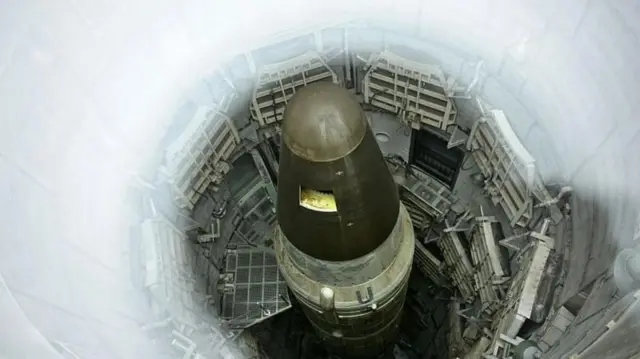
U.S. President Donald Trump’s order to begin “immediate” testing of the country’s nuclear arsenal could, if carried out, end the nuclear testing moratorium that the United States has maintained for over 30 years.
The announcement follows Russian President Vladimir Putin’s nuclear maneuvers on October 22 from the Kremlin, which involved land, sea, and air exercises and the launch of a Yars intercontinental ballistic missile with a range of up to 12,000 kilometers.
In 1992, the U.S. Senate approved a temporary suspension of nuclear tests in August, followed by the House of Representatives in September, initially for nine months, with the goal of ending all U.S. atomic testing by September 1996.
Although then-President George H.W. Bush, a Republican, and his successor Bill Clinton, a Democrat, threatened to veto the measure, the moratorium has remained in place ever since.
The decision came after the fall of the Soviet Union, the end of the Cold War, and a political climate in which many U.S. leaders and a significant portion of public opinion believed that the country should lead global denuclearization efforts. Technological advances have also allowed the United States to verify the reliability of its nuclear arsenal without conducting atomic explosions.
From World War II until 1992, the United States conducted over a thousand nuclear tests. Until 1963, these tests were atmospheric, after which only underground tests were performed.
Although the U.S. has not conducted nuclear detonations since September 1992, it has carried out several dozen subcritical experiments. These do not trigger chain nuclear reactions or produce atomic yield but are designed to verify the safety and effectiveness of the nuclear arsenal and remain within the limits established by the 1996 Comprehensive Nuclear-Test-Ban Treaty.
International
Brazilian president defends coordinated anti-drug operations after deadly Rio raid
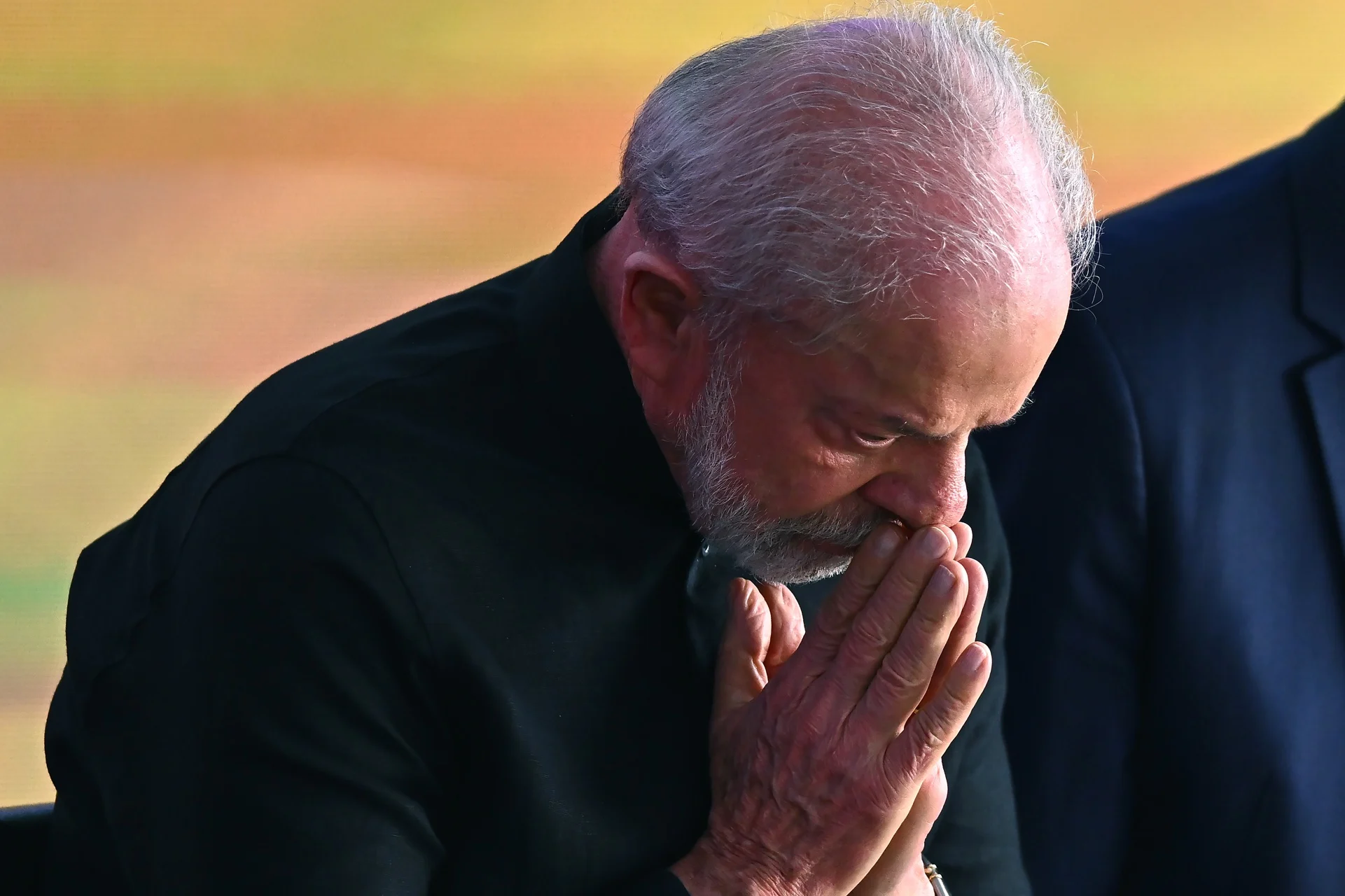
Brazilian President Luiz Inácio Lula da Silva defended on Wednesday the integration of the country’s various police forces into an anti-drug strategy that avoids civilian casualties, commenting on Tuesday’s police operation in Rio de Janeiro that left 121 dead—the deadliest in Brazil’s history.
“We need coordinated efforts that strike at the backbone of drug trafficking without putting police, children, and innocent families at risk,” the progressive leader wrote on social media.
Lula, along with several of his ministers, emphasized that organized crime is not defeated through violent confrontations in the favelas, but by measures that decapitalize these groups and reduce their financial power.
“That was exactly what we did in August during the largest operation against organized crime in the country’s history, targeting the financial core of a major organization involved in drug trafficking, fuel adulteration, and money laundering,” he stated, referring to a recent operation against the Primeiro Comando da Capital (PCC), a major national criminal group.
Lula stressed that Brazil cannot allow organized crime to continue destroying families, oppressing citizens, and spreading drugs and violence across cities.
He added that, in a federal country like Brazil, where public security is the responsibility of regional governments, it is necessary to unify the country’s police forces.
The head of state affirmed that integrating regional and national police forces to combat organized crime will be possible with the approval of a public security bill that the government has submitted to Congress.
International
US Deputy Secretary criticizes Mexico’s call to end Cuba trade embargo at UN
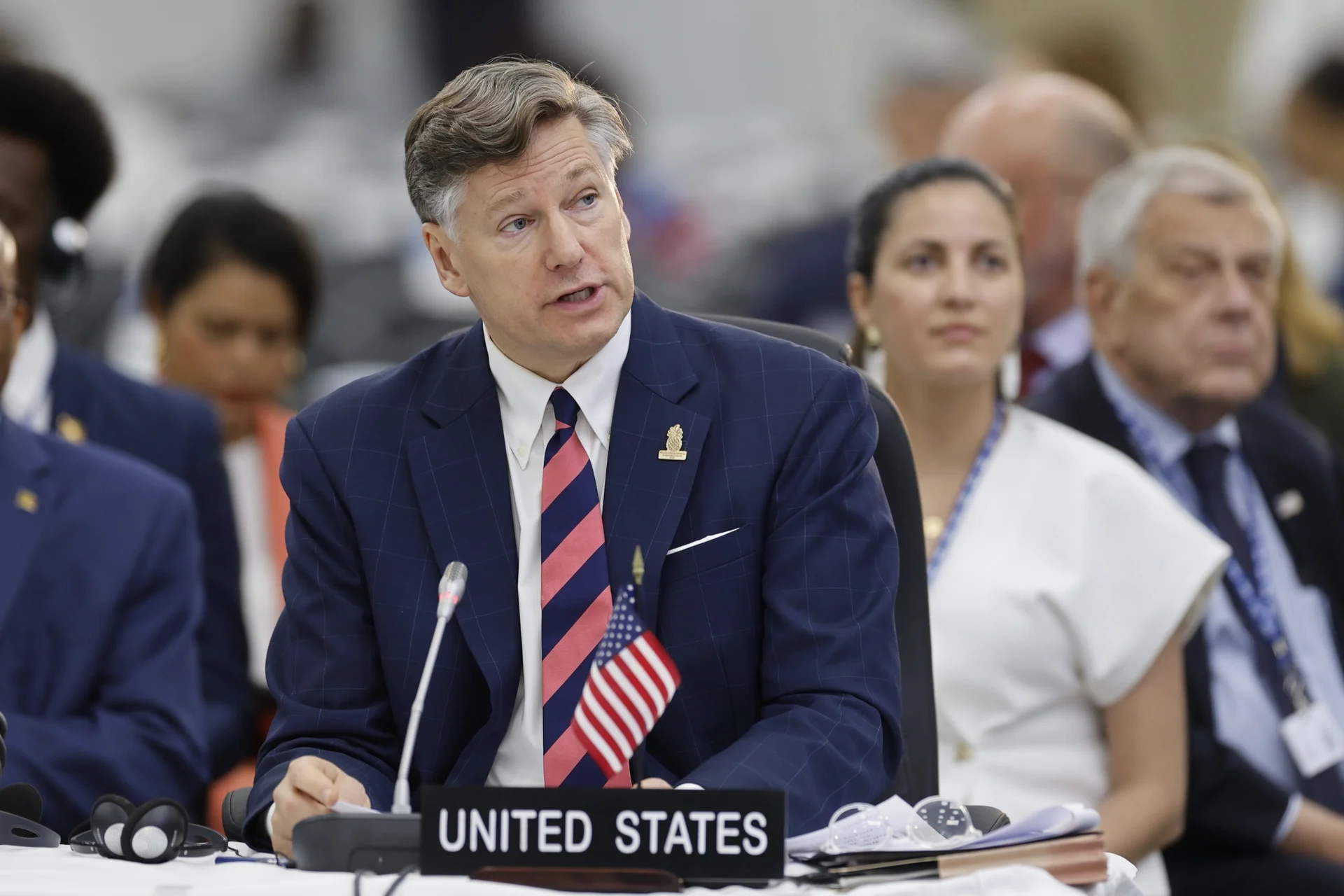
U.S. Deputy Secretary of State Christopher Landau reacted on Wednesday against Mexico’s request at the United Nations to lift the trade embargo on Cuba.
Landau expressed on X that he felt “sad” as a “friend of Mexico” after Mexico’s ambassador to the UN, Héctor Vasconcelos, reiterated solidarity with Cuba and stressed the “urgent need to end the trade embargo.”
“Let’s base ourselves on reality and not fantasies. There is no trade embargo on Cuba (…) Cuba freely receives goods and visitors from many countries,” Landau wrote.
The reaction from the State Department official came after the Mexican delegation urgently requested the removal of sanctions against Cuba at the United Nations headquarters in New York, where a majority of 165 countries voted in favor of ending the embargo imposed on the island since 1960.
Seven countries voted against the proposal, and twelve abstained. The United States, Israel, Argentina, Hungary, Paraguay, and Ukraine were among those opposing the measure, but the overwhelming support left the U.S. and its allies in the minority.
-

 International2 days ago
International2 days agoJamaica faces widespread destruction as hurricane Melissa hits the island
-

 International4 days ago
International4 days agoMexican journalist reporting on drug cartels killed in Durango
-
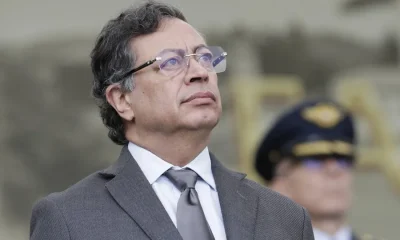
 International4 days ago
International4 days agoColombian president Gustavo Petro denies alleged ties to criminal networks
-

 International4 days ago
International4 days agoArgentina’s Milei secures strong victory and calls for dialogue after election surge
-
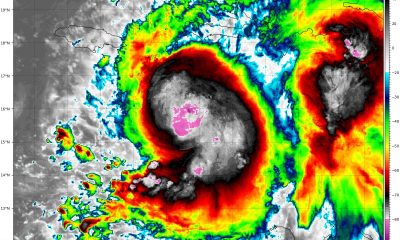
 International2 days ago
International2 days agoMelissa leaves path of destruction in Caribbean, 735,000 evacuated in Cuba
-
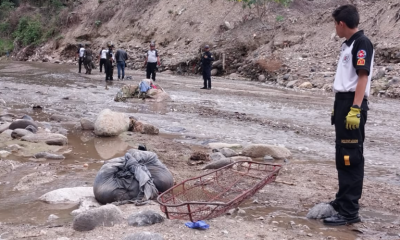
 Central America2 days ago
Central America2 days agoNew dismembered bodies found in San Juan river days after mass killing in Palencia
-

 Central America4 days ago
Central America4 days agoEl Salvador cracks down on narcotics: 24 tons confiscated in major anti-drug operation
-

 Central America2 days ago
Central America2 days agoFour guatemalan soldiers arrested for stealing weapons from Northern Air Command
-
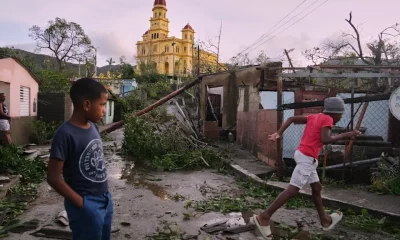
 International18 hours ago
International18 hours agoHurricane Melissa leaves Jamaican residents homeless as recovery efforts begin
-

 Central America2 days ago
Central America2 days agoArévalo accuses Porras and judge of undermining democracy in Guatemala
-

 International4 days ago
International4 days agoMaduro accuses U.S. of aggression over Caribbean military drills
-

 International2 days ago
International2 days agoArgentina’s Milei opens dialogue with parties to push “Second-Generation Reforms”
-

 Central America4 days ago
Central America4 days agoEl Salvador’s FGR prosecutes 89,875 gang members under state of exception
-
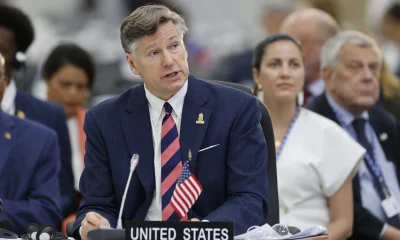
 International18 hours ago
International18 hours agoUS Deputy Secretary criticizes Mexico’s call to end Cuba trade embargo at UN
-
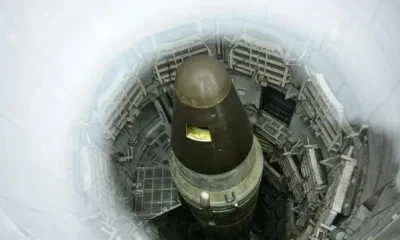
 International17 hours ago
International17 hours agoTrump orders immediate U.S. nuclear testing, ending 30-year moratorium
-
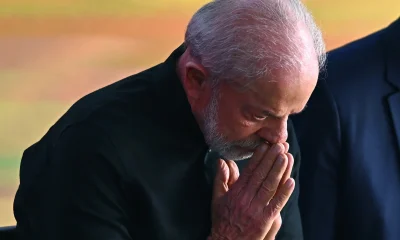
 International17 hours ago
International17 hours agoBrazilian president defends coordinated anti-drug operations after deadly Rio raid
-

 International18 hours ago
International18 hours agoVenezuela warns citizens who call for invasion risk losing nationality
-
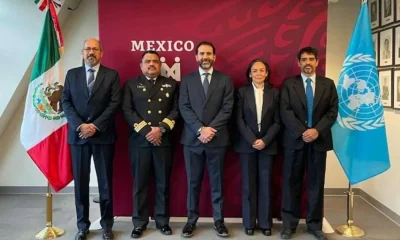
 International18 hours ago
International18 hours agoMexico advances continental shelf claims at UN Commission in New York
-

 International18 hours ago
International18 hours agoSimeón Pérez Marroquín, ‘El Viejo,’ detained for role in Miguel Uribe Turbay assassination plot

























